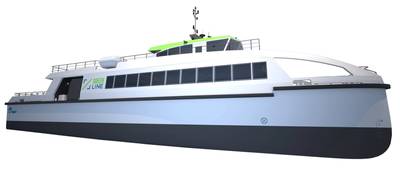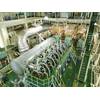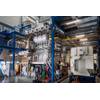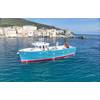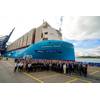BMT and Greenline Marine Roll Out New Electric Ferry Design
Naval architecture and marine engineering firm BMT announced it has teamed up with Canadian ferry transportation company Greenline Marine to develop a new all-electric ferry design.
The new 32-meter Greenline 150 Passenger Electric Ferry is equipped with the latest in electric propulsion technology and features an optimized hull form and propulsion system, with hull, propellers and rudders engineered to reduce the energy required for movement. This focus on efficiency directly impacts the vessel’s range and battery capacity—key factors in the performance of modern and sustainable electric ferries.
“The Greenline 150 Passenger Electric Ferry is not just a vessel; it’s a statement of where the industry is heading,” said Lee Hedd, Regional Sales Director for BMT in the Americas. “With a strong focus on efficiency, this design addresses both the immediate need for sustainable transportation and the long-term operational considerations crucial for the ferry industry. Small gains in efficiency, particularly in all-electric vessels, can significantly extend the range and endurance of the vessel, making energy-saving methods more compelling than ever.”
“At Greenline Marine, we embrace innovative maritime designs especially when that leads to better outcomes for our communities and the environment,” said the CEO of Greenline Marine. “The Greenline 150 is a testament to that philosophy. By working closely with BMT, we’ve created a ferry that not only meets today’s stringent environmental standards but also sets a new benchmark for passenger comfort and operational efficiency. This ferry offers a much quieter, smoother ride with no vibrations or exhaust fumes, ensuring a far superior experience for passengers.”
The design has been rigorously tested to meet the most stringent environmental protection standards set by international certification bodies such as the International Maritime Organization (IMO) and the Marine Pollution (MARPOL) convention.
When designing the vessel, the physical size and weight of the batteries posed some design challenges, requiring careful analysis and placement to ensure optimal vessel performance, BMT said. Additionally, the design incorporates state-of-the-art safety measures, including advanced fire protection systems, to mitigate the risks associated with batteries.
“We’ve engaged with class societies and equipment suppliers early in the design process to ensure our vessel meets and exceeds current regulatory standards,” Hedd said. “The industry recognizes the need to move forward rapidly with the development of new standards, and our collaborations have been extremely positive. This vessel is designed with the future in mind.


